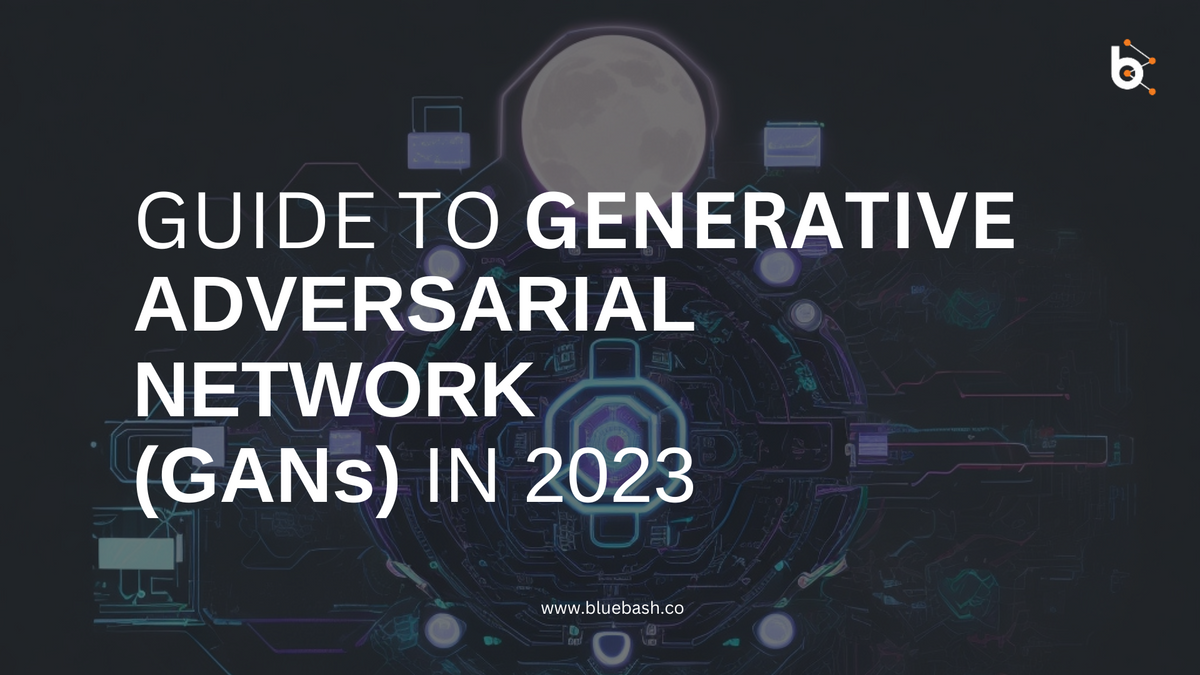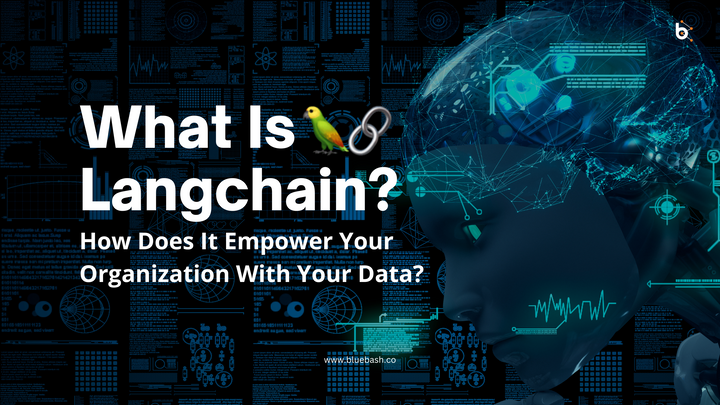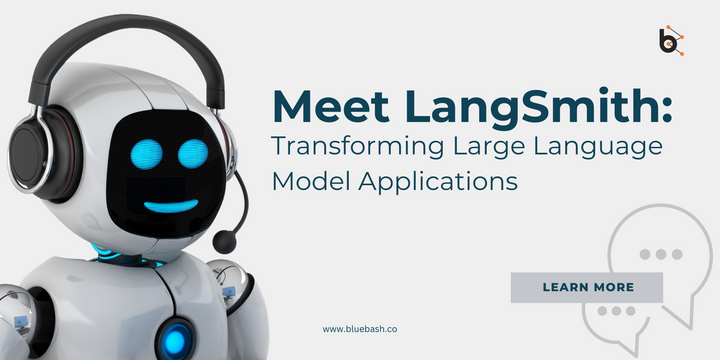An Introduction To Generative Adversarial Networks

In the realm of artificial intelligence (AI), one groundbreaking concept that has captivated the imagination of researchers, engineers, and enthusiasts alike is Generative Adversarial Networks or GANs. These innovative algorithms have become a cornerstone in the world of AI and have ushered in a new era of creativity and innovation. In this comprehensive blog, we will delve deep into the world of GANs, exploring their origin, connection to generative AI, applications, and the profound impact they've had on our world.
What Are GANs?
Generative Adversarial Networks, commonly referred to as GANs, are a class of machine learning models introduced in 2014 by Ian Goodfellow and his colleagues.
GANs consist of two neural networks, the Generator and the Discriminator, which engage in an adversarial training process to produce high-quality synthetic data. The Generator tries to create data that is indistinguishable from real data, while the Discriminator aims to tell whether the data is real or generated.
The key idea behind GANs is that the competition between the Generator and the Discriminator drives the generation of increasingly realistic and coherent data. Over time, the Generator becomes better at creating convincing data, and the Discriminator becomes more skilled at detecting fake data.
The Founders of GANs
The concept of GANs was first proposed by Ian Goodfellow, along with Yoshua Bengio, Aaron Courville, and Pierre-Antoine Manzagol, in their seminal paper titled "Generative Adversarial Nets." This groundbreaking work fundamentally changed the landscape of machine learning and introduced a novel approach to generative modeling. Yann LeCun one of the pioneers in the
field of machine learning and deep learning described it as the most interesting idea in the last 10 years in machine learning.
GANs and Generative AI
Generative Adversarial Networks are closely related to the broader field of generative AI. Generative AI aims to create AI models that can generate content autonomously, such as images, music, text, and more. GANs are a powerful tool within generative AI, as they excel at creating high-quality synthetic data that can be virtually indistinguishable from real data.
Generative AI and Generative Adversarial Networks (GANs) are closely connected, as GANs are a subset of generative AI techniques. Let's explore the relationship between these two concepts:

Common Objective:
Both Generative AI and GANs share the overarching goal of generating data that is realistic and coherent. They seek to replicate patterns and structures observed in real-world data, making them valuable tools for various applications, such as image generation, text generation, and more.
Diverse Applications:
Generative AI techniques surround a wide range of methods beyond GANs, including autoregressive models like LSTM and GRU, Variational Autoencoders (VAEs), and more. GANs are a specific approach within this larger category. While GANs are well-known for their capabilities in generating realistic images, generative AI encompasses a broader spectrum of applications, such as natural language generation, music composition, and data augmentation.
A Major Discovery in AI
Generative Adversarial Networks is considered one of the major parts due to their transformative capabilities. Before GANs, generating realistic synthetic data was a significant challenge. GANs, with their adversarial training process, enabled AI systems to produce content that was previously thought to be beyond the reach of machines. This major discovery has opened up a myriad of possibilities in various domains.
Understanding GANs and How They Work
GANs applications consist of two neural networks, the Generator and the Discriminator, which engage in a fascinating adversarial training process.
The Generator:
The Generator's primary task is to create synthetic or fake data that closely resembles the real data it has been trained on. It starts with random noise as input and gradually refines its output over time. Think of the Generator as a skilled counterfeiter trying to create a fake currency that looks and feels exactly like genuine money.
The Discriminator:
The Discriminator, on the other hand, is like a detective trained to spot fake currency. It takes both real and synthetic data as input and tries to distinguish between the two. The better it becomes at detecting fake data, the more challenging the Generator's job becomes.
Adversarial Training Process:
Initialization
At the start, the Generator produces crude, unrealistic data, and the Discriminator is unable to distinguish between real and synthetic data.
Adversarial Feedback Loop
The two networks engage in a feedback loop. The Generator generates synthetic data, and the Discriminator tries to discern real from fake. This feedback loop drives both networks to improve.
Learning and Convergence
Over time, the Generator becomes skilled at producing data that can deceive the Discriminator, while the Discriminator becomes adept at detecting fake data. This competition continues until the Generator produces data that is nearly identical to real data.
Convergence
Ideally, this process continues until the GAN reaches a point of convergence, where the Generator's output is virtually indistinguishable from real data.
GANs Training Process
GANs' training process is marked by adversarial competition between the Generator and Discriminator, resulting in the continual improvement of both networks. It's a dynamic interplay that can lead to impressive results when well-tuned.

Applications of GANs
Image Generation:
Photo Realism- GANs can create highly realistic images of faces, objects, landscapes, and more, often indistinguishable from real photographs.
Art Generation- They are used in art to generate unique and creative digital artworks, turning abstract concepts into visual representations.
Video Synthesis:
GANs can generate synthetic video sequences, alter scenes, and create entirely new videos.
They have applications in special effects, animation, and video game development.
Data Augmentation:
GANs can create synthetic data points, which are useful for expanding small datasets and improving the performance of machine learning models.
This is particularly valuable when labelled training data is limited.
Medical Imaging:
GANs generate high-quality medical images, such as MRI and CT scans, to aid in diagnostics, treatment planning, and medical research.
They can also be used for data augmentation in healthcare datasets
Image-to-Image Translation:
GANs can translate images from one domain to another, such as turning satellite images into maps or black-and-white photos into colour.
Text-to-Image Synthesis:
GANs can generate images based on textual descriptions, providing a bridge between text and visual content.
This has applications in content creation, storytelling, and advertising.
Drug Discovery:
GANs assist in generating molecular structures for potential drug candidates, accelerating the drug discovery process.
They can predict chemical properties and optimize molecular designs.
Anomaly Detection:
GANs can be used to identify anomalies or outliers in datasets, making them valuable for fraud detection, cybersecurity, and quality control.
Content Generation for Games:
GANs can generate game assets, characters, and environments, reducing the time and cost of game development.
They improve the realism and variety of game content.
Virtual Try-On:
GANs enable virtual try-on experiences in e-commerce, allowing customers to see how clothing or accessories look on them before making a purchase.
Voice Synthesis:
While primarily used for images and videos, GANs can also generate synthetic voices, making them applicable in speech synthesis and voice acting.
Deepfake Generation:
While controversial, GANs have been used to create deepfake videos and audio, which has implications for entertainment and potentially harmful misuse.
How GANs Changed the World?
Generative Adversarial Networks have had a profound impact on our world, revolutionizing multiple domains:
Art and Entertainment: GANs have breathed life into the worlds of art, animation, and entertainment by creating realistic characters, scenes, and animations.
Fashion and Design: In the fashion industry, GANs have been used to design clothing and accessories, saving time and resources.
Healthcare: GANs in Healthcare have improved diagnostic accuracy by generating realistic medical images, aiding doctors in better patient care.
Data Augmentation: Machine learning models benefit from GAN-generated data, enhancing their performance.
Research: GANs have accelerated research in various fields by providing tools to generate synthetic data for experiments and simulations.
Security: GANs are also a double-edged sword, as they have raised concerns about deepfake technology and its potential misuse in creating deceptive content.
Conclusion
Generative Adversarial Networks (GANs) in Artificial Intelligence are a transformative force. With their capacity to generate highly convincing synthetic data, GANs have propelled the field of AI to new heights, revolutionizing art, design, and even medical diagnostics. As researchers continually refine their capabilities, GANs promise to reshape our world, pushing the boundaries of what AI can achieve.



